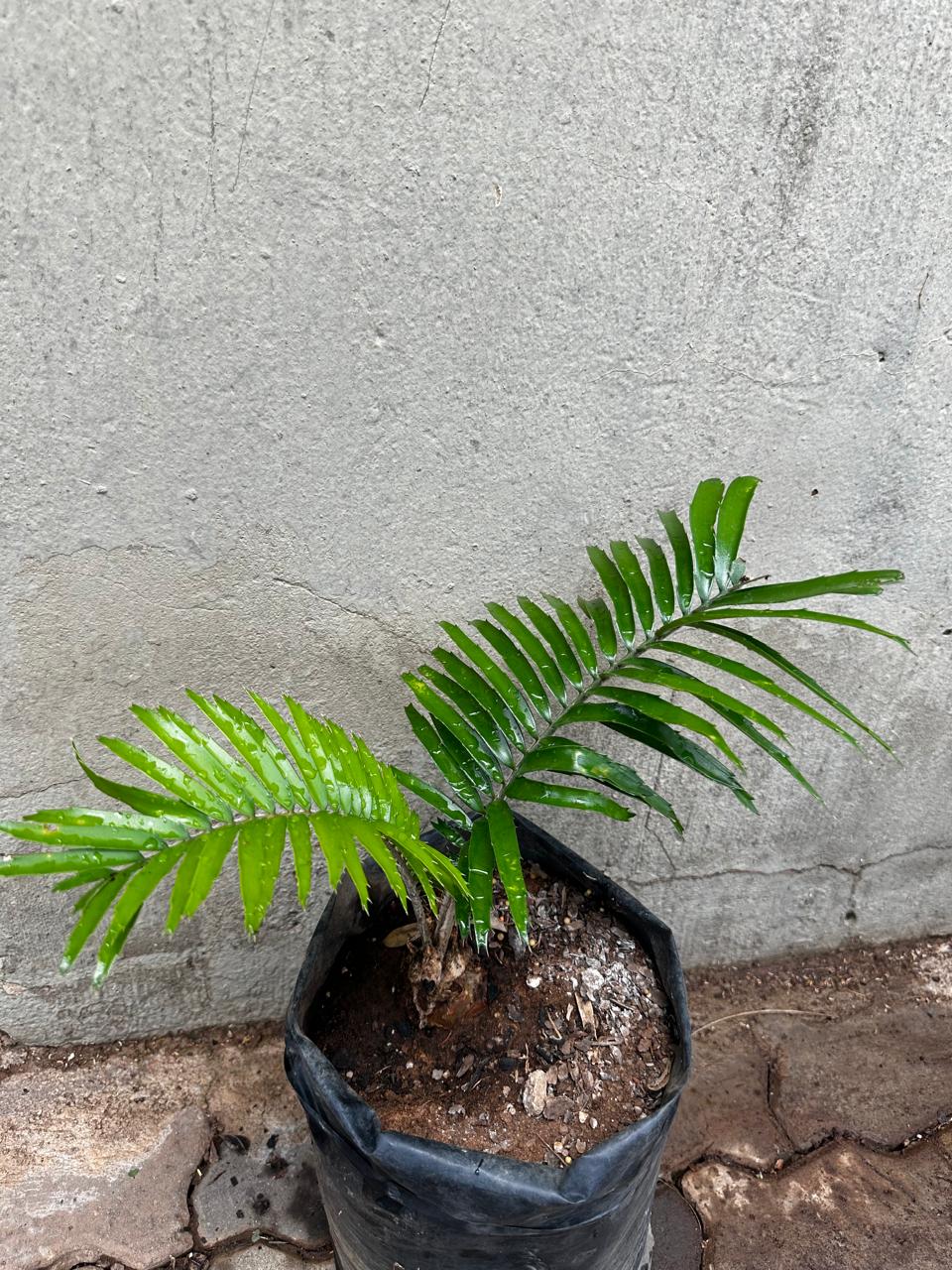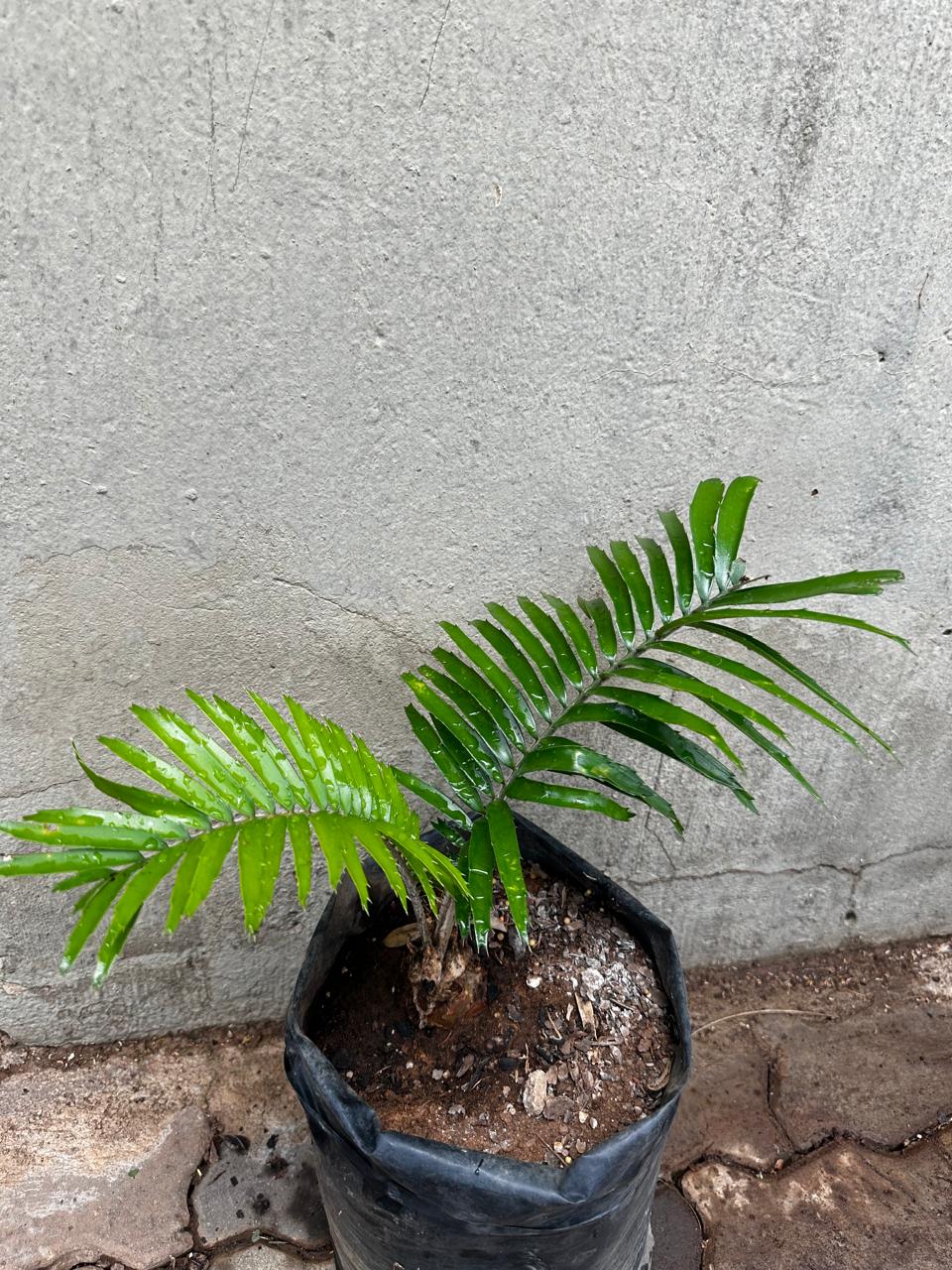

Encephalartos aplanatus
Encephalartos aplanatus, commonly known as Vorster's cycad, is native to the northeastern part of Eswatini (Swaziland), where it thrives in the shade of deciduous trees within dry ravine forests. This species closely resembles Encephalartos villosus but is distinguished by its larger size and non-suckering habit.
Cones
Male plants of E. aplanatus produce up to three narrowly ovoid cones per stem, each measuring 65 cm in length and 8–10 cm in diameter. These cones are green when young, maturing to yellow, and are borne on peduncles up to 22 cm long. Female plants yield one to two barrel-shaped cones, approximately 40 cm long and 12 cm in diameter, with short, stout peduncles up to 6 cm long. The seeds are ellipsoid, about 2.5 cm long, and encased in a bright red sarcotesta.
Leaves
E. aplanatus typically produces 2 to 8 erect, arching leaves up to 3.5 meters long, which tend to sag horizontally with age. The petiole can extend up to 20 cm, and the lower rachis is covered with a whitish indumentum. Mature leaves are dark green and glossy, with twisted and undulating leaflets arranged oppositely at 180 degrees to each other. Median leaflets measure up to 30 cm in length and 4 cm in width, tapering to an acute tip with sparsely dentate margins.
Stems
E. aplanatus features a single subterranean stem with an exposed apex, typically not producing basal suckers. The stem is covered with old leaf bases, providing structural support, and has a slightly woolly crown. In its natural habitat, the stem may be adorned with lichens and mosses, adding to its distinctive appearance. This robust cycad thrives in well-drained soils under full sun or partial shade, making it a popular choice for ornamental gardening